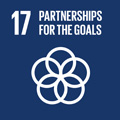- Docente: Andrea Bolognesi
- Credits: 2
- Language: Italian
- Teaching Mode: E-learning
- Campus: Bologna
- Corso: Single cycle degree programme (LMCU) in Medicine and Surgery (cod. 5904)
Learning outcomes
The students will study the morphological changes caused by the disease processes and the basic reactions to etiologic agents in cells and tissues, together with the pathogenetic mechanism of their development. This educational laboratory will enable the student to recognize the microscopic alterations in cells and tissues characteristic of the pathologic processes, by the study of general histopathology which will be hold in parallel to the course of General Pathology and Physiopathology.
Course contents
1. Cellular and extracellular pathology: reversible cell injury and fatty change, amyloidosis, necrosis and infarction.
2. Neoplastic transformation: benign tumors, malignant tumors, metastases.
3. Inflammatory and reparative response: acute inflammation, chronic nonspecific and granulomatous inflammation, granulation tissue, sclerosis, cirrhosis.
4. Vascular disease: medial calcific artheriosclerosis, atherosclerosis, thrombosis.
Readings/Bibliography
Teaching materials
https://virtuale.unibo.it/my/
Virtual microscopy
https://unibo.smartzoom.com/
Reference text:
V. Kumar, A.K. Abbas, J.C. Aster. “Robbins & Cotran - Pathologic Basis of Disease, 10th edition, 2020, Elsevier Ed.Teaching methods
This blended learning teaching consists of 11 theoretical-practical lectures, which will provide students with the necessary elements for the autonomous examination of microscopic histopathology preparations. To allow individual access to the preparations, students will be divided into four groups. A teacher will be constantly present during laboratory training, to guide the study, answer the questions and solve the problems. The e-learning part of the course is supported by the VIRTUALE platform, to which students must register via the University credentials.
Assessment methods
The learning level will be assessed at the end of classes. The examination is unique for all the subjects of the Integrated Course and it will consist of two questions. One of the two questions will include a practical microscopy test to assess the learning of the General Pathology Laboratory. The online registration to the exam through Alma Esami is mandatory
The exam aims to evaluate the knowledge acquired by the student on the course contents in order to achieve the educational goals. The exam assesses the student ability to frame the topic of general pathology or pathophysiology on which they are questioned and to expose it by making the necessary logical-deductive connections. The coherence of the conceptual succession and the appropriateness of the scientific language are further elements of evaluation. The examination of the General Pathology and Pathophysiology Course includes the observation and oral description of a microscopic preparation up to the recognition of the specific histopathological picture. The student must be able to discuss the morphological alterations of a histopathological specimen, in relation to the theoretical and practical knowledge acquired on the subject during the course.
Graduation of the final grade
18-20: knowledge of the basic concepts without serious gaps. Exposition of concepts and language as a whole acceptable.
21-25: knowledge of the basic concepts without gaps. Ability to analyze and link in partial autonomy. Exposure of discrete concepts and language.
26-29: preparation of good or very good level or even excellent preparation but with inaccuracies in the presentation that compromise the achievement of full marks. Ability to analyze and link independently. Exposure of concepts in the right succession and mastery of the language.
30-30L: full preparation, consolidated and without inaccuracies on the topics covered in the course. Ability to promptly frame the topic. Ability to analyze and connect independently. Concepts in the right succession and full command of the specific language.
The final grade derives from the collegial evaluation carried out by the teachers who examined the student.
Teaching tools
The histopathology laboratory has 56 microscopes. This part of the course uses the Virtual platform (https://virtuale.unibo.it/) for teaching material and the Virtual Microscopy platform (https://unibo.smartzoom.com/), both accessible 24 hours out of 24. The Virtual Microscopy platform allows remote viewing of samples with the possibility of moving around the virtual slide at different magnification levels, selecting histological markers and having explanatory windows. In the e-learning part (General Pathology Laboratory C1c) there are slides of the lessons, slides with images selected by the teacher of histopathological preparations, lessons with animations, self-evaluation tests with multiple choice quizzes.
Office hours
See the website of Andrea Bolognesi
SDGs




This teaching activity contributes to the achievement of the Sustainable Development Goals of the UN 2030 Agenda.
